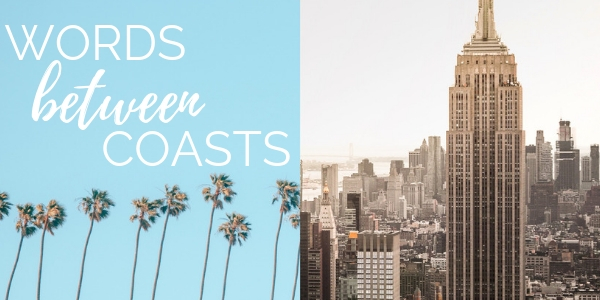The word “redneck” is often carelessly used as an insult.
It is used to describe those living in the country with little money, little education, and unabashed racism. However, most people don’t know the history of that word. ‘Redneck’ actually has a fascinating backstory – and it has little to do with a low IQ, country life, or trailer parks.
Life in West Virginia in the late 1800s and early 1900s was arduous, and often even desperate. The coal industry was booming and offered a plentiful supply of jobs to the men around town. And, they took the jobs, despite how hazardous the work was. In fact, the coal companies were so powerful that they controlled almost every aspect of every city. This included running the schools, hospitals, and stores. They even issued their own currency, scrip, which they forced people to use instead of government-issued dollars and coins. Armed mine guards kept people within the system by exiling or even shooting those who strayed.
These abusive conditions were what prompted those who worked in the mines to form the United States’ first union.
Thus, the United Mine Workers of America History was formed. People of all races and backgrounds banded together to fight the system. They demanded better pay, safe working conditions, a termination of the mine guard system, and the right to organize. And, they all wore red bandanas around their necks.
The coal companies were furious about the union organizing. This attitude still exists today when faced with union organizing. Big companies prefer to put money and comfort into the hands of their white collar workers instead of treating their blue collar workers fairly. So, they responded by increasing the number of armed guards, who intimidated and tormented the coal miners. Consequently, this prompted battle – both intellectually and physically.
Families of the miners were banished from the towns and, for the next year, forced to live in tents in the Appalachian Mountains. They were constantly under attack from the mine guards. Mothers protected their tents from bullets by lining them with iron pots and pans. They were subjected to martial law several times. Mary Harris “Mother” Jones, a famous and influential union organizer, began her life’s work in orating.
The massive tensions led to a huge strike in 1912.
Six thousand miners threatened to kill the mine guards and break the coal mining company’s equipment. The state militia intervened and confiscated thousands of firearms and ammunition from both sides, along with daggers, bayonets, and brass knuckles.
The feud continued on past World War I, as the coal mine owners continued to get richer and the coal miners got poorer. A successful strike in 1919 secured higher wages and safer working conditions. There was a noticeable difference in treatment between the union areas and non-union areas.
In Matewan, the mayor, Cabell Testerman, and sheriff, Sid Hattfield, supported the union workers’ rights.
On the other side were the thugs from the Baldwin-Felts Detective Agency. The coal mining companies were trying to force miners to sign “yellow dog contracts” – contracts that legally prevent them from joining a union. On May 19, 1920, this led to a standoff, which left 10 people dead; seven detectives, two miners, and the mayor. This became known as the Matewan Massacre.
However, there is another, even grimmer, possible version of this story. It seems that Sid Hattfield, the sheriff, may have fired the first shot, which initiated the violence. Therefore, that would mean that he was purposely trying to defeat the Baldwin-Felts Detective Agency, who were outnumbered by the union workers. Many union members agreed that the only way to achieve their goal of fair pay and safe working conditions was with the use of violence. Considering that they were opposed by pretty much everyone who was not a coal miner, there may truly have not been another way to achieve fair union rights.
Hattfield was applauded by many for his bravery.
But the Haldwin-Felts Detective Agency was furious about having seven of their men gunned down. They were not about to let the union workers have the last word. So, they served Hattfield with a legal charge of conspiracy and murdered him on the steps of the courthouse the day of his hearing.
The slaying of their hero was the last straw for the coal miners. Hence, they staged a battle against the coal companies, shooting at the mine guards and those who were in positions of power. The coal companies started raining down shrapnel bombs and bleach from planes onto union headquarters. The violence stopped only when President Harding sent troops to calm the attacks.
Unfortunately, the press that hungrily covered the incidents skewed the perspective of the violent attacks to make the coal mining companies the heroes and the coal miners the villains. This turned many more outsiders against the workers, and a slew of miners were indicted for murder and treason. The unions started turning their backs on Matewan.
These battles instigated a slew of other revolts in many other states and cities.
The United Mine Workers of America History has ignited the way for other unions in other industries, ensuring that jobs provide safe working conditions and a living wage. The creation of unions is due to every redneck who fought for their rights.
So, next time you use the term ‘redneck’, remember its history.
It’s a shame to know that the term is being used to degenerate people when actual rednecks were incredibly brave and created an institution that has improved the lives of so many people. If you’re ever at a union rally, be sure to wear a red bandana around your neck to honor those who paved the way. Be proud to be a redneck.

My name is Andrea and I live in Los Angeles, California. By day, I am an actor and by night I am working towards a degree in nutritional science.






